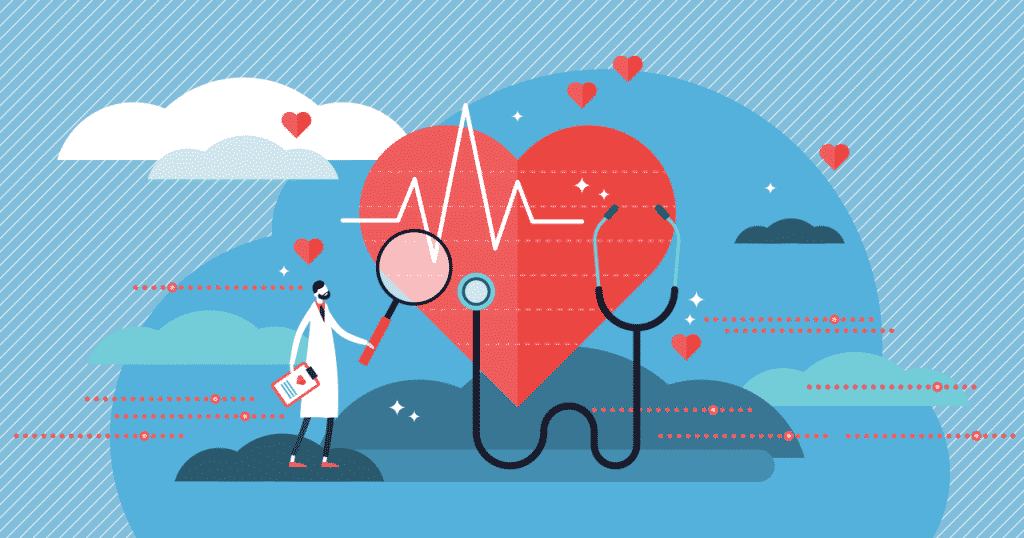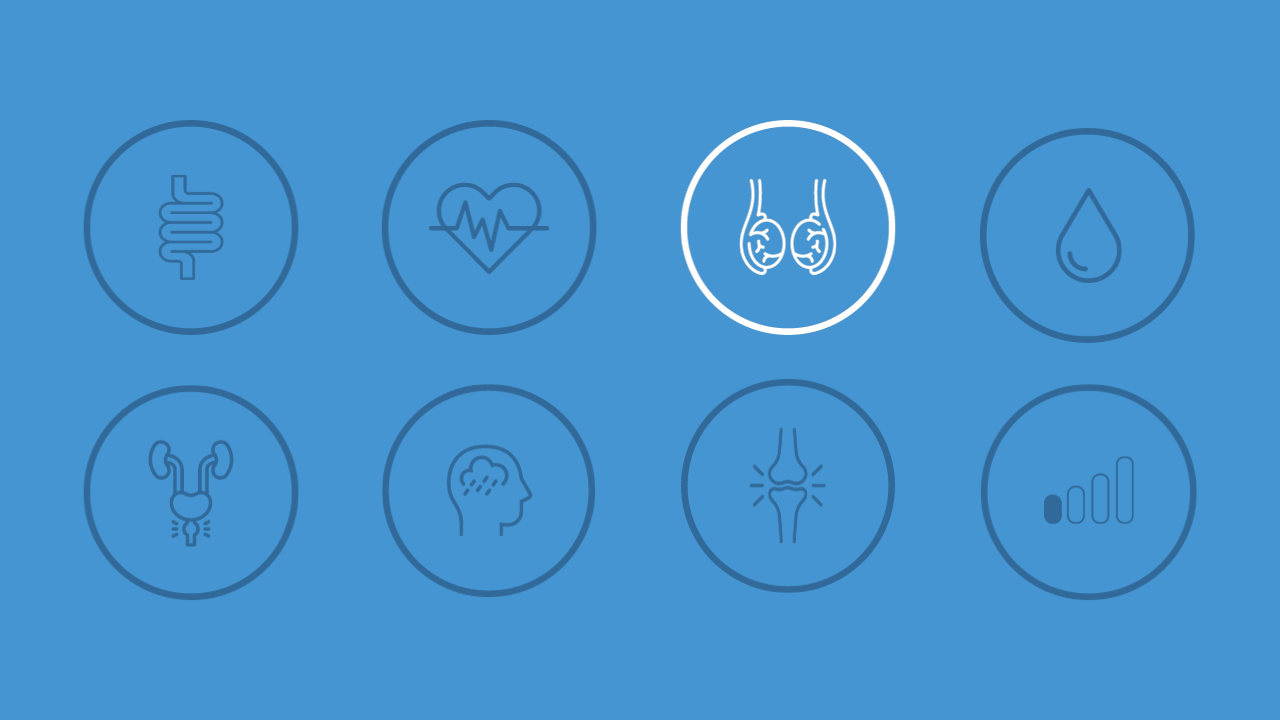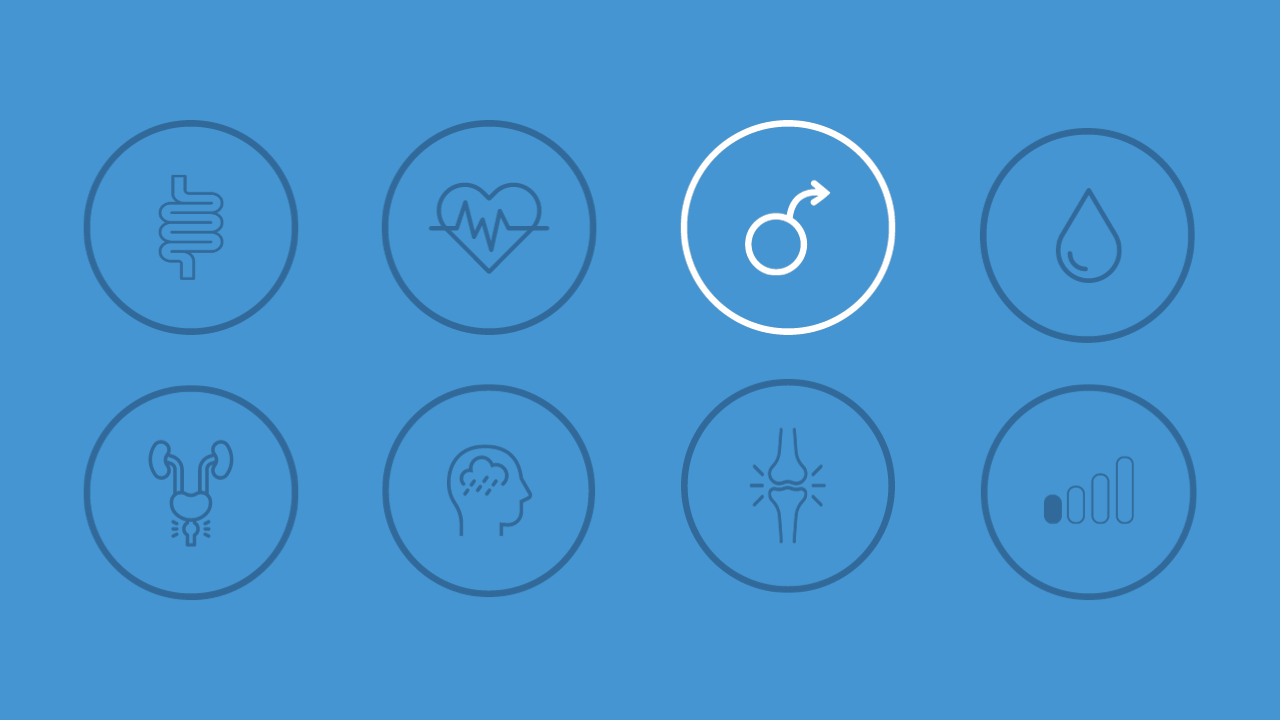Prostatitis
Medically reviewed by:

CM, OBC, MD, FRCSC, FACS, FCAHS
What is Prostatitis ?
Prostatitis is an inflammation or infection of the prostate gland.
It can occur at any age but is most common in men under the age of 50. Half of adult men will be treated for prostatitis in their lifetime.
Prostatitis can occur in several different forms: bacterial, non-bacterial, and chronic pelvic pain disorder. It is usually not a life-threatening condition (unless a severe infection goes untreated).
Risk Factors
Most cases of prostatitis are the result of a bacterial infection.
Unprotected sexual intercourse can let bacteria into the urethra, which can travel up to the prostate. Some sexually transmitted infections can also increase the risk of developing bacterial prostatitis.
Other cases of bacterial prostatitis can be caused when the muscles of the pelvis or bladder do not work properly, and urine flows back into the urethra, enters the prostate and causes infection or inflammation. In older men with enlarged prostates, infections may occur because of failure to empty all urine from the bladder.
Studies have suggested there could be a relationship between long-term prostatitis and prostate cancer. Although a definite link has not been shown, men with long-term prostatitis should have regular prostate checks.
Signs & Symptoms
It is possible to have only some or many of the symptoms of prostatitis. Be sure to see a doctor if you have a combination of any of the following:
- the feeling of urgently needing to urinate
- frequent urination
- painful ejaculation or blood in semen
- lower back pain, muscular pain
- frequent urinary tract infections
- perineal pain, where there is pain at the base of the scrotum and penis
- chills, fever
- general lack of energy
- sexual difficulties
- low sperm count
Diagnosis
Acute bacterial prostatitis is diagnosed by rapid and severe urinary symptoms (including the inability to urinate) associated with fever, chills, muscle aches, back pain, and malaise. It can usually be confirmed by urine and blood culture tests to identify bacteria.
Chronic bacterial prostatitis is a bit more difficult to confirm. One must prove that there are signs of infection, either by finding bacteria in prostate fluid or urine collected immediately after prostate massage. In addition, there must be signs of white blood cells (leukocytes) in these fluids.
Nonbacterial prostatitis is diagnosed when no bacteria are found in the urine or prostate fluid, but white blood cells may be present as an indicator of inflammation.
The National Institute of Health’s Chronic Prostatitis Symptom Index may be useful in grading the degree of symptoms and for monitoring response to treatments.
Treatment
Antibiotics and drainage of the bladder are used to provide quick relief of bacterial prostatitis, but treatment should persist for many weeks to prevent a more serious situation from arising.
Antibiotics can treat chronic bacterial prostatitis, but it may take many courses and years to completely clear up.
Treatment of chronic nonbacterial prostatitis includes long-term antibiotics and anti-inflammatory drugs. In addition, some men have found that avoidance of irritants of the urinary tract (caffeine, alcohol, spicy foods, and smoking) may speed their recovery. Frequent ejaculation (even if uncomfortable) may be helpful for some men. For each individual with this form of prostatitis, there may be a different treatment. Stress often aggravates this condition, and measures to reduce stress, including pelvic floor physiotherapy or relaxation, are often needed.
Medically reviewed by:

Dr. Larry Goldenberg, CM, OBC, MD, FRCSC, FACS, FCAHS
Dr. Goldenberg is a urologic surgeon and clinical scientist, who specializes in prostate cancer research and treatment.
More about Dr. Larry Goldenberg

